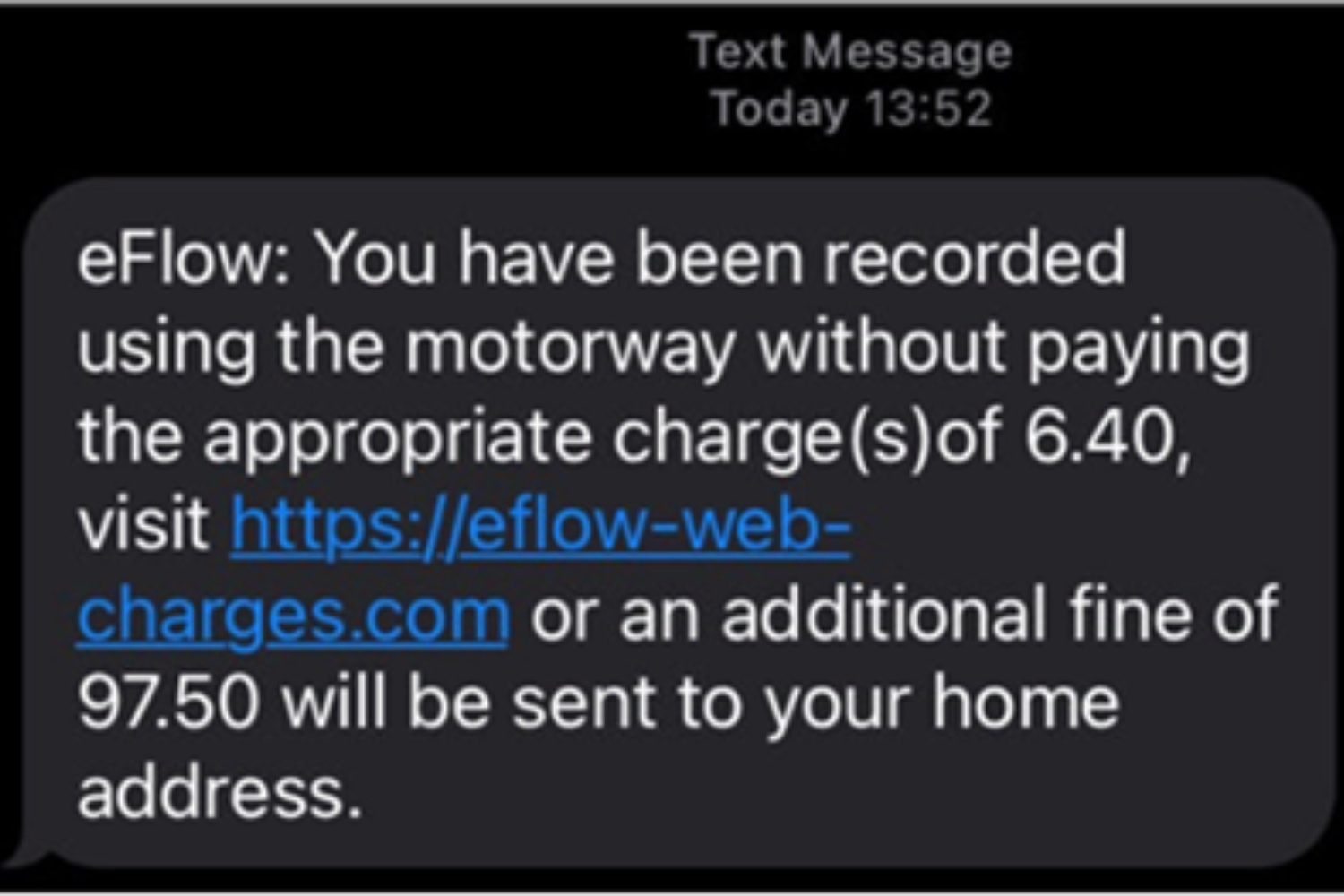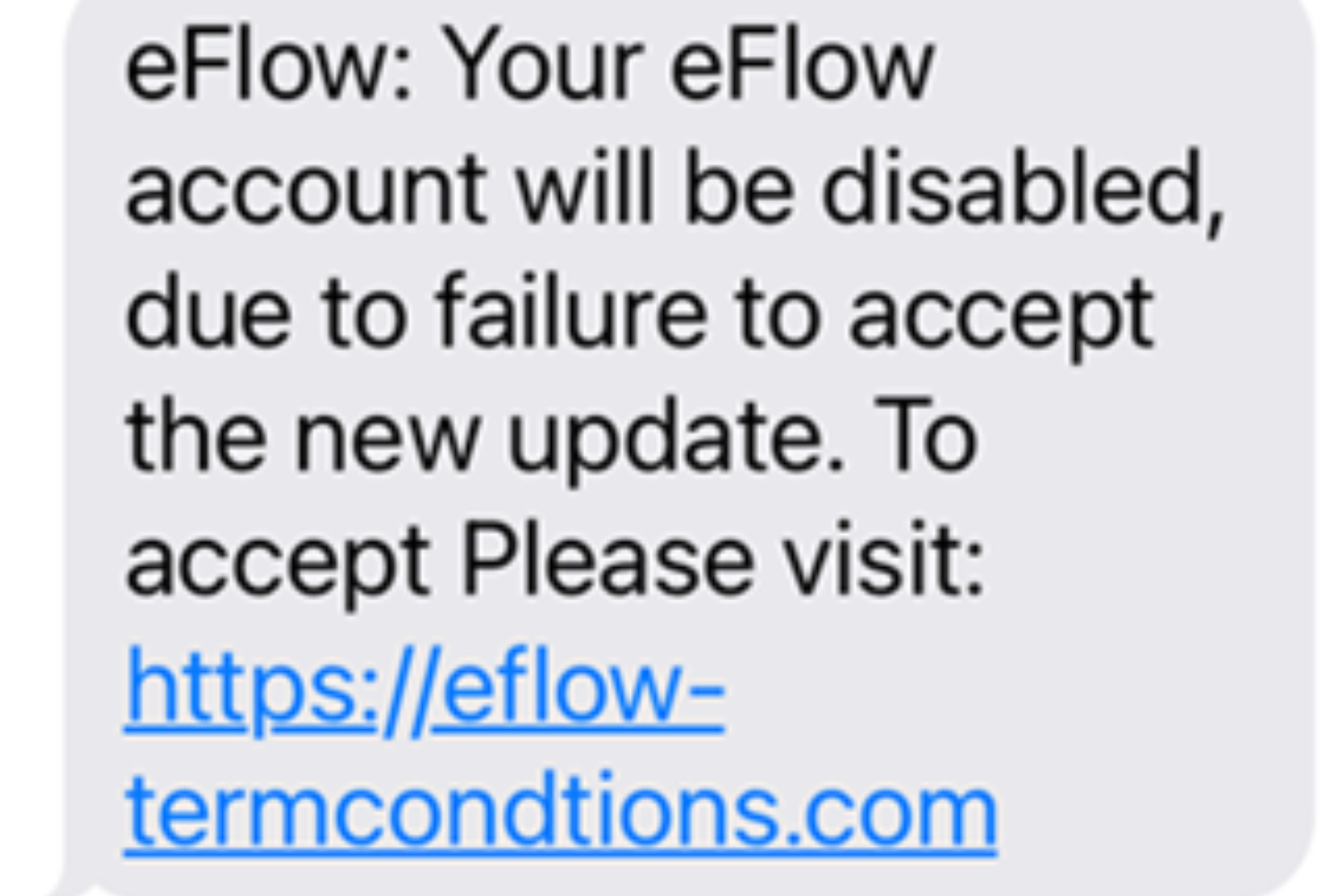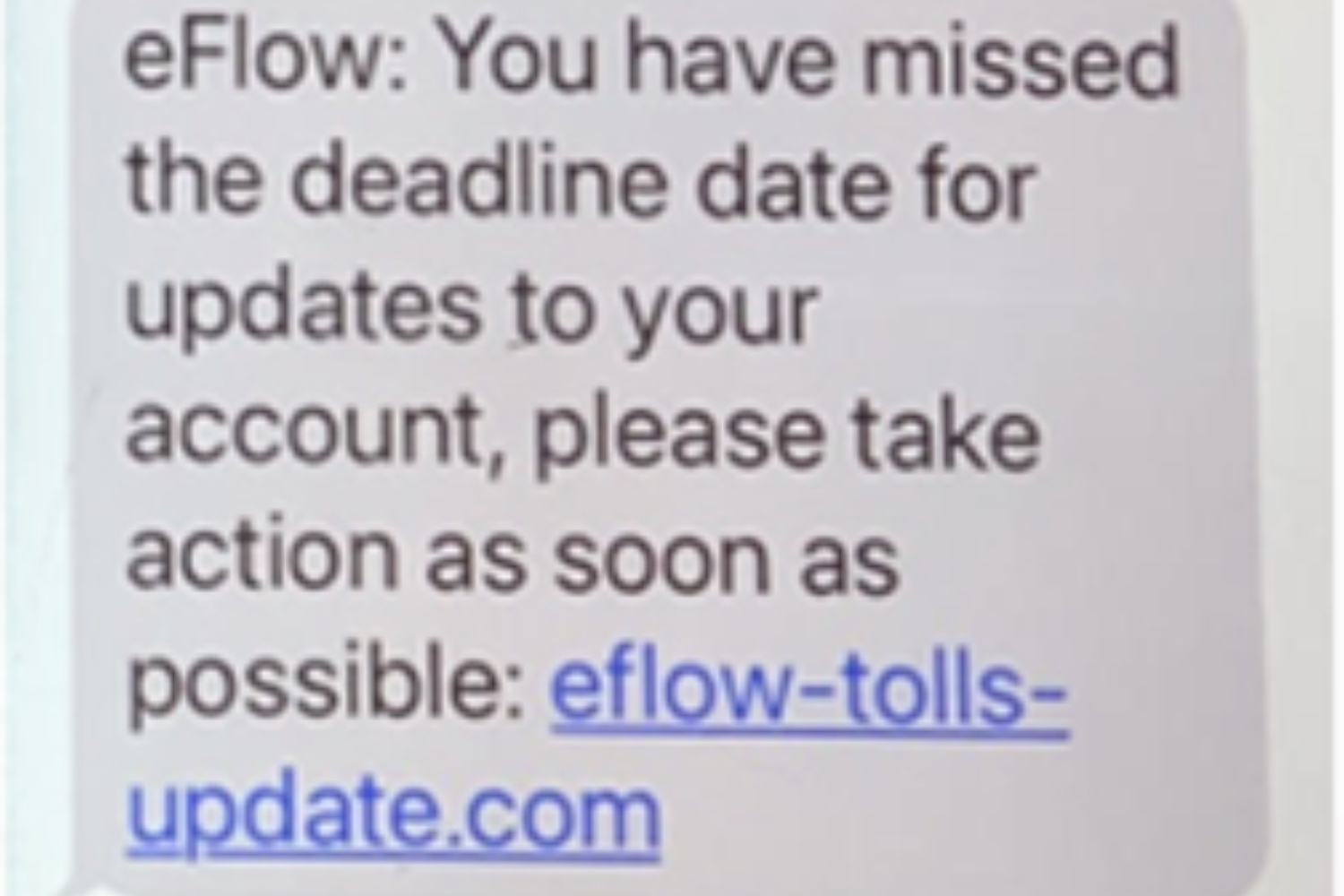Irish drivers are being warned to watch for fraudulent demands for motorway toll payments.
The warning comes from Bank of Ireland, which told CompleteCar that it has seen an 'escalating wave' of fraudulent demands for toll payments.
Fake demands for toll payments
The messages being sent out, either demanding late toll payments or asking for toll accounts to be updated, are phishing or smishing schemes designed to harvest customer account details.
Discussing the latest wave, Nicola Sadlier, Head of Fraud, Bank of Ireland, said: "Smishing attacks tend to come in waves, and the latest theme is motorway fraud, where fraudsters are sending fake text purportedly from operators such as eFlow. When you click on the text it leads to a fake website where some will end up providing their confidential card and bank account details. As more people will be hitting the roads this Easter weekend, they might be more inclined to click on such a text message thinking it is legitimate.
Never trust, always verify
"In the past we have seen similar waves of fraudulent messages appearing to be from delivery services, Government agencies or banks and now it seems that motorway smishing is trending. Text messages should be treated with extreme caution - the general rule is never trust, always verify."
Bank of Ireland's advice is never to click on a link in a text or WhatsApp message, as companies such as motorway toll operators, banks, delivery companies, utility providers and Government agencies will never send a text linking to a website that requests online banking details.
eFlow, which runs the motorway tolling system for the M50 motorway in Dublin, has said that anyone who receives a text message regarding unpaid tolls should ignore the message and not open any links. eFlow does not ask customers to open any links to confirm payment details.
Call the company directly
If you're in any doubt, the best thing to do is to directly call the company supposedly behind the message, having first sourced the correct customer services number either online or via directory inquiries. You can then properly verify if the text is genuine or not.
If you get a text you believe to be fraudulent, take a screenshot, delete it, and send it to [email protected].
If you have any other questions regarding online fraud, the best thing to do is visit boi.com/security or www.fraudsmart.ie.





